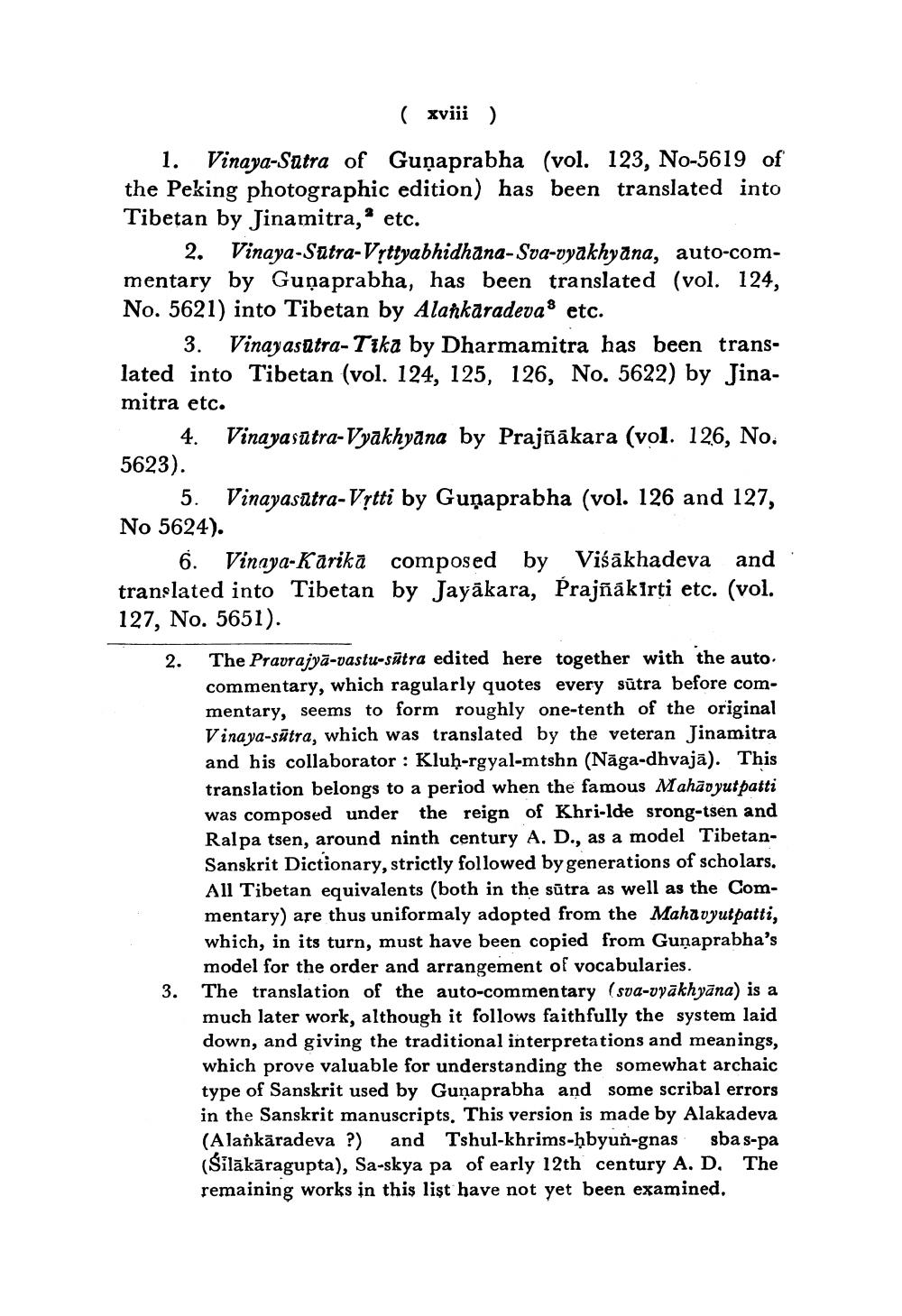________________
( xviii) 1. Vinaya-Sutra of Guņaprabha (vol. 123, No-5619 of the Peking photographic edition) has been translated into Tibetan by Jinamitra,“ etc.
2. Vinaya-Satra-Vịttyabhidhāna-Sva-vyakhyāna, auto-commentary by Guņaprabha, has been translated (vol. 124, No. 5621) into Tibetan by Alankaradeva etc.
3. Vinayasatra-Tika by Dharmamitra has been translated into Tibetan (vol. 124, 125, 126, No. 5622) by Jinamitra etc.
4. Vinayasūtra-Vyakhyāna by Prajñākara (vol. 126, No. 5623).
5. Vinayasūtra-Vịtti by Guņaprabha (vol. 126 and 127, No 5624).
6. Vinaya-Kārikā composed by Viśākhadeva and translated into Tibetan by Jayākara, Prajñākirti etc. (vol. 127, No. 5651). 2. The Pravrajya-vastu-sütra edited here together with the auto.
commentary, which ragularly quotes every sutra before commentary, seems to form roughly one-tenth of the original Vinaya-sūtra, which was translated by the veteran Jinamitra and his collaborator : Kluh-rgyal-mtshn (Năga-dhvajā). This translation belongs to a period when the famous Mahādyutpatti was composed under the reign of Khri-lde srong-tsen and Ralpa tsen, around ninth century A. D., as a model TibetanSanskrit Dictionary, strictly followed by generations of scholars. All Tibetan equivalents (both in the sūtra as well as the Commentary) are thus uniformaly adopted from the Mahavyutpatti, which, in its turn, must have been copied from Guņaprabha's model for the order and arrangement of vocabularies. The translation of the auto-commentary (sva-vyākhyāna) is a much later work, although it follows faithfully the system laid down, and giving the traditional interpretations and meanings, which prove valuable for understanding the somewhat archaic type of Sanskrit used by Guņaprabha and some scribal errors in the Sanskrit manuscripts. This version is made by Alakadeva (Alankāradeva ?) and Tshul-khrims-hbyun-gnas sba s-pa (Silākāragupta), Sa-skya pa of early 12th century A. D. The remaining works in this lişt have not yet been examined,




